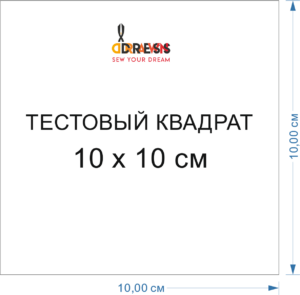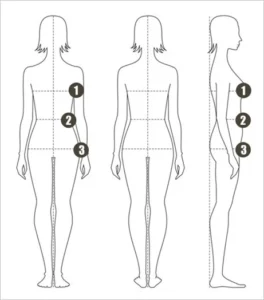Sweep – temporary joining of two pieces, approximately equal in size, with or without seating along the marked lines. The stitches are 0.5-2.5 cm long on the sweep side, 0.2-0.5 cm on the reverse side. The stitching is done at a distance of 0,1-0,15 cm from the marked line to the cut side of the pattern, so that the sweep stitches do not fall under the machine stitching. Sew side and shoulder cuts, sleeve front and elbow cuts, and more.
Sewing – temporary joining of two pieces overlapping one another. You can sew hem trims on the sides, patch pockets on the shelf. Stitch length 0,7-2,5 cm. Sometimes, swooping is done with oblique stitches, when it is necessary to obtain a stable connection of parts of smooth fabrics.
Piecing is the temporary joining of a small pattern to a large pattern or a non-main pattern to a main pattern. Cuffs are sewn to the sleeve, flaps to the pocket lines.
Seaming is the temporary fixing of the folded edge of a piece, pleats, or darts with basting stitches. For example, the bottom of a skirt, dress or sleeve. The length of the stitch is 1-3 cm.
Piecing is the temporary joining of two pieces along an oval contour using a purl stitch. Example: Sewing a collar into the neck or a sleeve into the armhole.
Tucking – fixing the hemmed and turned edge with the formation of a border, frame or the location of the seam on the fold. Tucking is done with straight or oblique tucking stitches 0.5-1.0 cm long. The stitching is done from the side of the piece to which the fabric is being skipped. The width of the edging is 1-2 mm.
Sewing – attaching the folded edges of one pattern to another pattern or to the same pattern with blindstitching stitches. The stitch frequency is 2-4 per 1 centimeter.
Sew on – Attach hardware, trim, or embellishment to a piece. For example, sewing on a button, hooks, buttons, rhinestones, or sequins.
Cut out parts – cutting out the parts of the product according to the outline, with additions for seams.
Decorate – embellish with any sewing hardware.
Draping – laying the material in folds and then fixing them.
Duplication of parts – gluing two or more parts together over the surface by ironing.
Seam gluing – applying glue to the edges of a leather piece in the seam area and then gluing a strip of material or braid.
Shrinking of product parts – reducing the length of the product by stitching along the edge and pulling the lower threads together with subsequent wet ironing.
Terminology of machine work
Sewing – joining of two or more cuts on overlapping edges.
This is the sewing of side and shoulder seams, sleeve seams. Sew on – joining small parts to large parts. Example: sew on a flap, a pocket.
Basting is the joining of parts and then turning them out (that’s what professional seamstresses say, not “turning them out”). For example, hemming of sides, flaps, necks.
Stitching – joining the parts along the oval contour. Insert the collar into the neckline, the sleeve into the armhole.
Stitching – stitching when one piece is overlapping another to join them together; attaching seam allowances, pleats in one direction. Stitch side and shoulder seams, basques, patch pockets.
Unstitching – stitching on a pattern to secure seam allowances, pleats that point in opposite directions. Stretch sleeve seams, back seams, skirt panels, counter pleats.
Stitching – stitching to secure the folded edge of a piece or product.
Stitch on the edge of the product – machine stitching along the edge of the product from the front side.
Stitch fastening – fastening the ends of all internal stitches with back stitching. The length of the tack is 0.7-1.0 cm. When stitching along a closed contour, the ends of the stitching should overlap each other by at least 1.5-2.0 cm.
The edging of seam allowances is the finishing of a pattern cut with an oblique braid for the purpose of trimming or protection against shattering.
Quilting is the joining of two layers of fabric, with filler between them, together in a straight stitch, which forms a convex pattern on the surface of the product.
![]()
Ironing terminology
As a side note, professional tailors don’t say “iron.” They stroke the cat, and we iron.
WTO – wet-heat treatment. Special treatment of parts or products with moisture, heat and pressure.
Iron out – remove creases, folds on the cut parts (iron out) or in the finished product.
Iron – reduce the thickness of a part, cut, seam, fold, giving it the correct shape.
Unstitch – straighten seam allowances or folds on both sides and iron.
Blindstitch – point seam allowance or fold to one side, secure with iron.
Tuck – to shorten the length of the pattern cut to give it the desired shape, to iron away gathers, slackness, sealing the fabric. Tuck – lengthen the edge of the pattern for a curved shape.
To steam – to remove the shine (lassi) with a wet cloth folded in several layers or with steam. The finished product is steamed. Decant – moisten and iron the fabric before cutting to prevent shrinkage.
Iron the seam “on the edge” – after sewing the two patterns together, iron the seam in the same position.
There are many more sewing terms and definitions than are listed here. If you could fit everything into one page, it would be a very large and unnecessary list that could be confusing. We will get acquainted with everything in more detail as we work.








